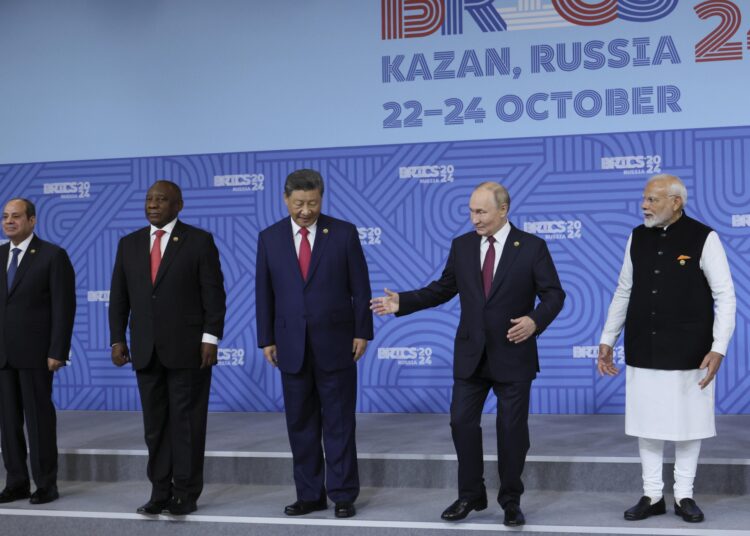With the advent of 2025, Brazil became the head of the BRICS, the youngest of the international organizations, comprising 30 states from three continents. It gained notoriety in 2024 when, under the leadership of Russia, the powerful diplomatic machinery of that country promoted it and even mentioned it as a pillar of a new system of international economic relations.
The members of the BRICS form a varied and curious association. In addition to lacking a charter, statutes, rules of entry, and headquarters, it includes liberal democracies, Christians and Muslims, monarchies and theocracies, as well as countries with an undefined profile and whose members have in common being economically prosperous nations that seek to improve their performance in the global economy and international politics.
BRICS is the acronym formed by the initial letters of Brazil, Russia, India, China, and South Africa. It was coined in 2001 by Jim O’Neill, a renowned British economist, then director of Global Economy of the financial conglomerate Goldman Sachs, who mentioned these countries as the most important emerging powers for 2050.
Perhaps motivated by the forecast of the British economic agent, in 2006 the foreign ministers of these countries met in New York, an opportunity in which Russian Foreign Minister Sergei Lavrov expressed the interest in institutionalizing the collaboration.
In 2008, still far from the intention of forming a bloc and promoting a new international economic order, they decided to create a coordinating group with its own policies.
The group is interested in deepening its integration into the global economy, without promoting confrontation with any other international actor. On the contrary, among its singularities is the agreement between traditional competitors such as China and India or Iran and Saudi Arabia.
Although some more than others have economic contradictions with the United States and Europe, except Russia, which has been in a virtual state of war with them since 2022, none is interested in escalating into a political confrontation.
Probably, under the leadership of Brazil, which will underline the original motivations of the group, the confrontational nuances will be attenuated and the efforts to promote the use of national currencies in mutual exchanges will be depoliticized, something that is done with Europe, which trades in euros, and other countries whose currencies are solid and this does not constitute a major problem, except for some such as Iran and Russia, sanctioned by the United States.
The politicization of this issue does not help to solve the problem, but rather to sharpen the contradictions, something that President Trump threatens to do. He has said that he will sanction with strong tariffs those who promote the creation of alternative currencies, something that is a pipe dream for the BRICS.
The most interesting feature of the present version of the BRICS is the admission of Cuba, for which the fact has a profound connotation. It is the first time since 1964, when it left the International Monetary Fund (IMF), that the island has joined an international entity integrated into the global economy, with a Western profile and broad projections.
Because it is the small economy of a country with a small population, affected by a prolonged and deep crisis derived from the United States blockade and internal structural factors, the admission of the island is an exception, a recognition of the role and potential of the country and a way of providing it with spaces and opportunities to diversify its economic and/or financial possibilities.
The question is whether the presence of Cuba, the bearer of an old dispute with the United States, will contribute to the politicization of the organization or whether the entity to the moderation of the country.
When considering the significance of the island’s joining the BRICS, Cuban Foreign Minister Bruno Rodríguez Parrilla stressed that this occurred despite the efforts of the United States to isolate his country, emphasizing that it is: “An opportunity that opens new commercial, investment, and cooperation opportunities, which we must know how to take advantage of.” Knowing how to take advantage. That’s what it’s all about! See you there.
________________________________________
*This text was originally published in the newspaper ¡Por esto! It is reproduced with the express authorization of its author.










